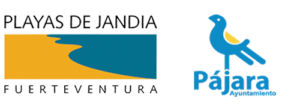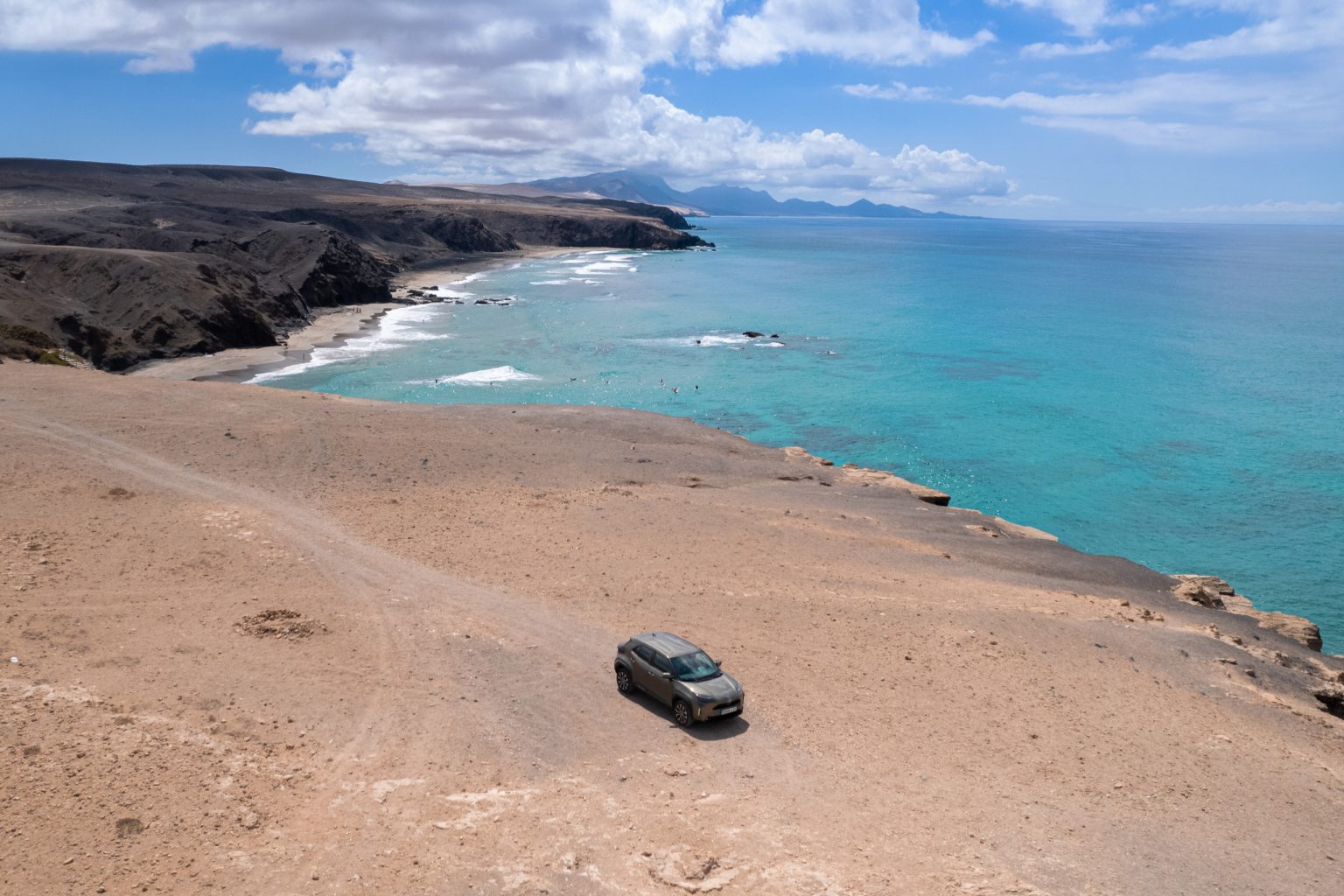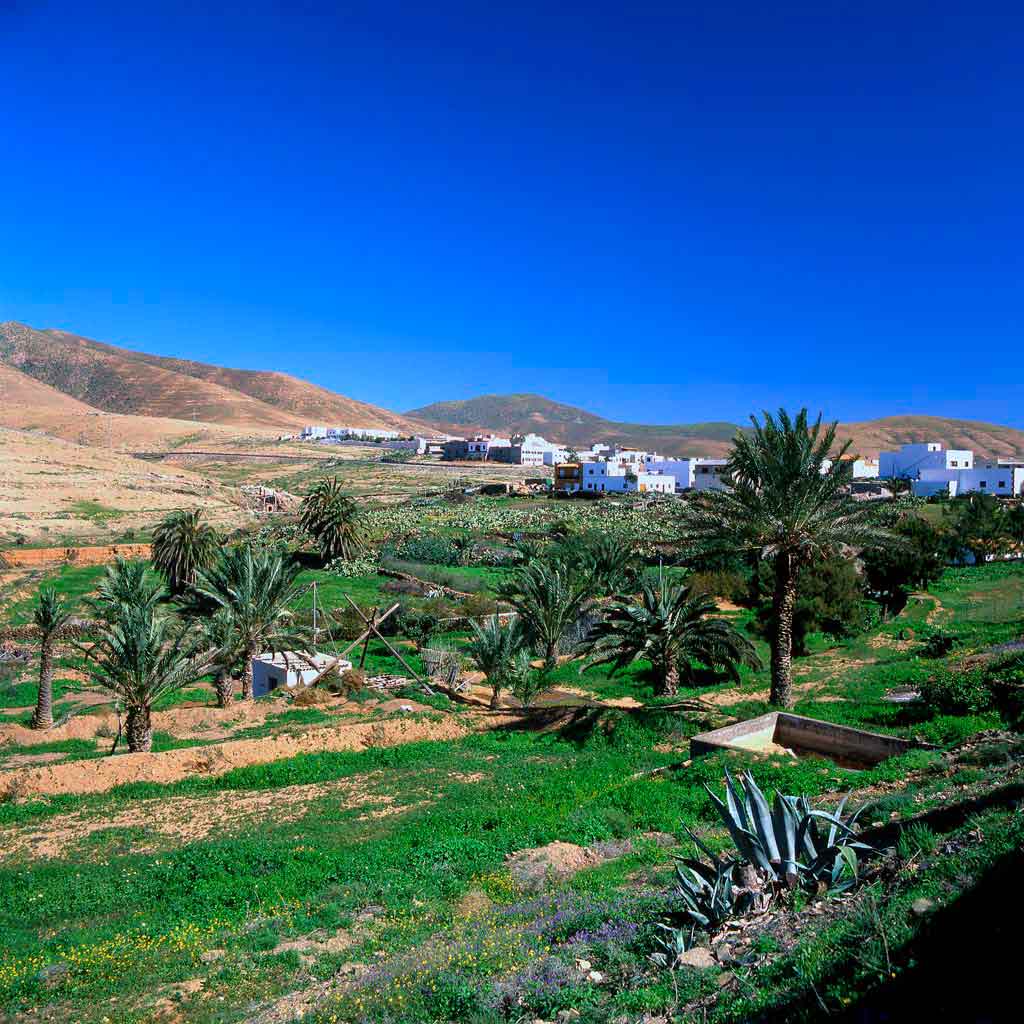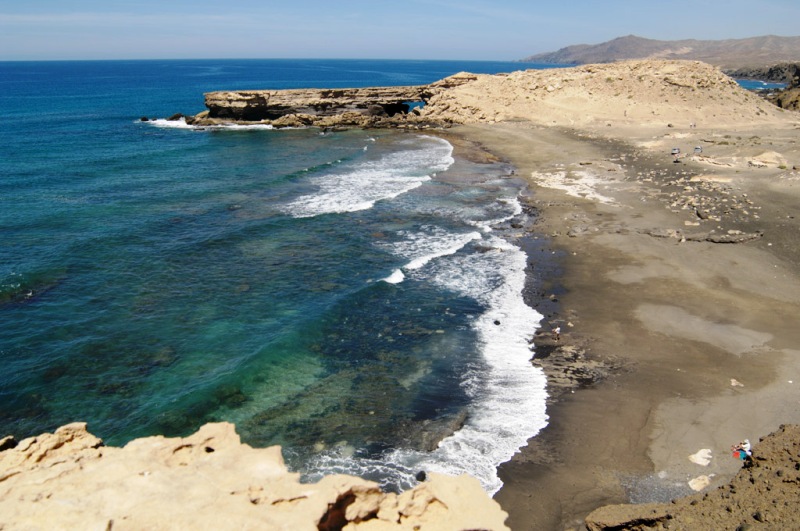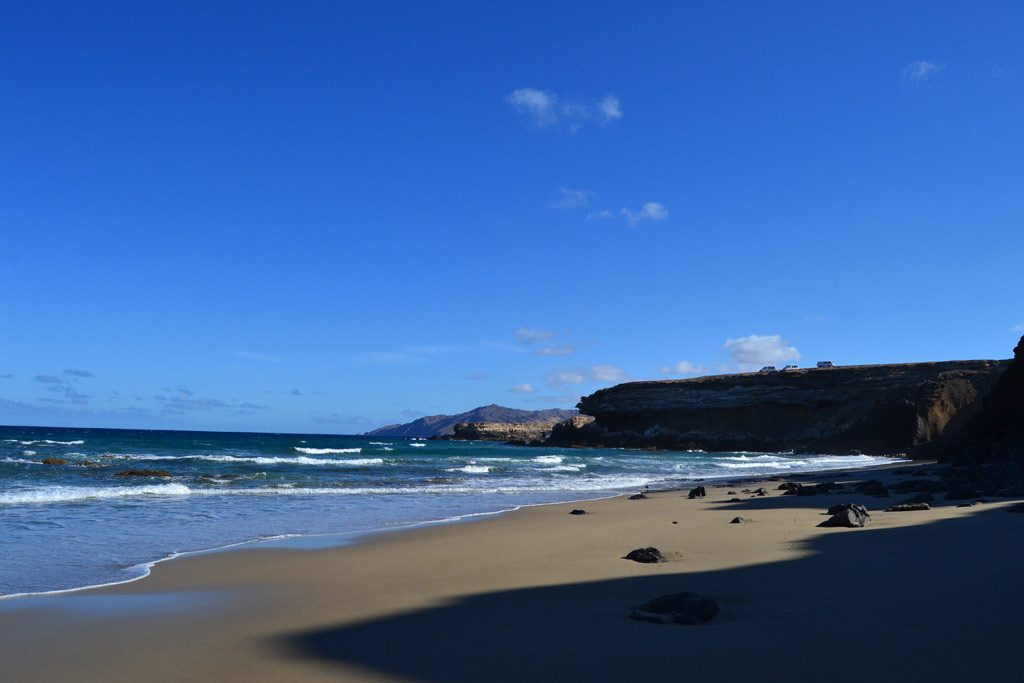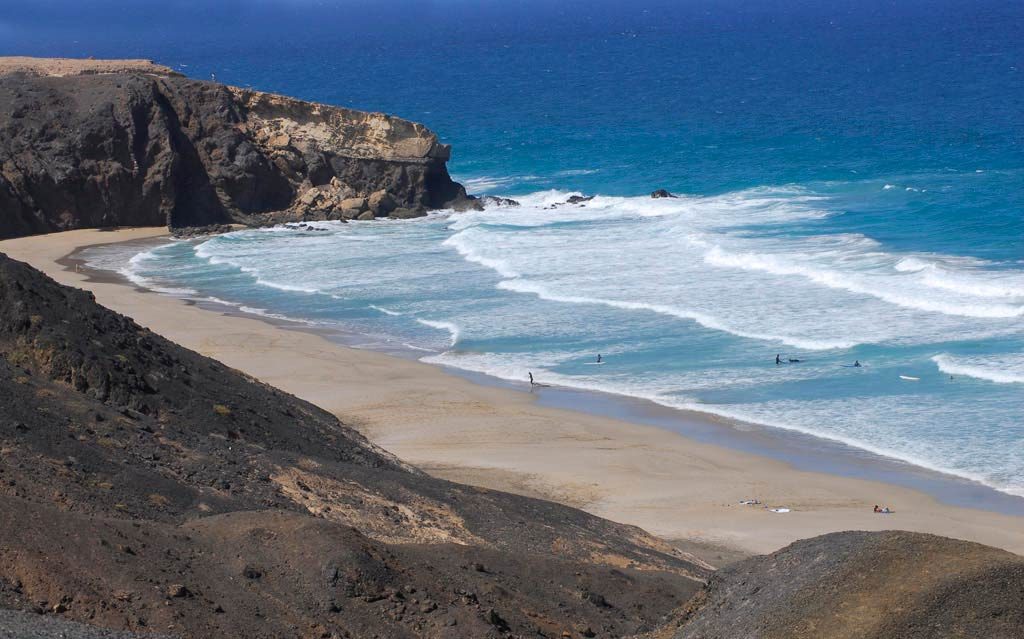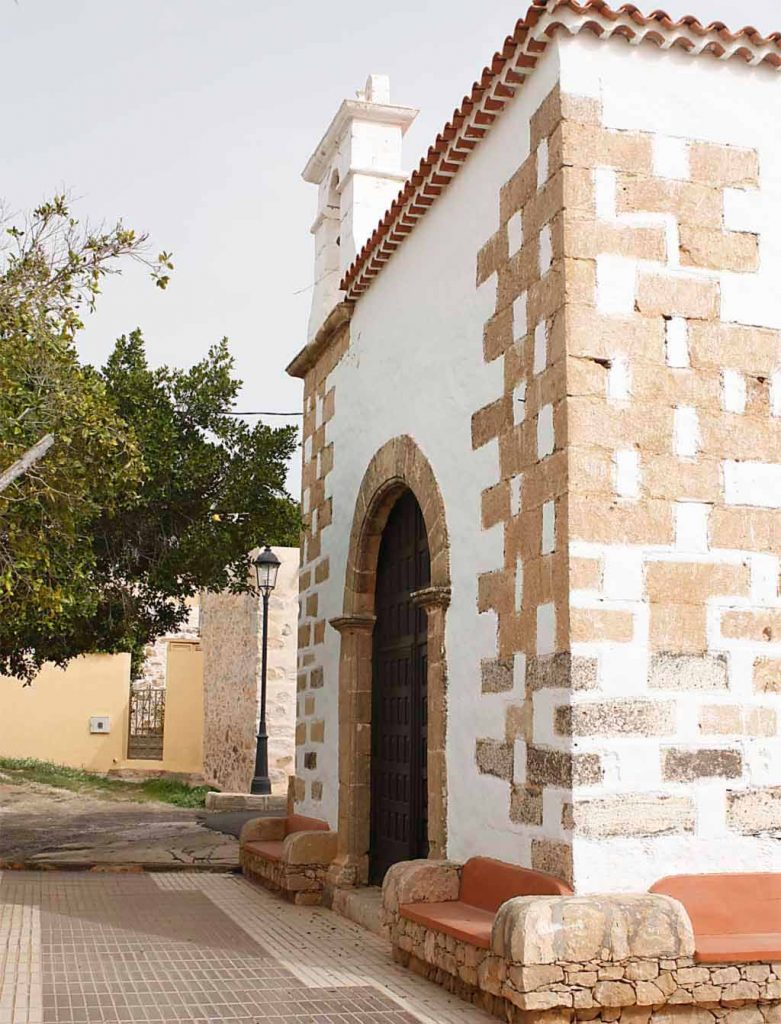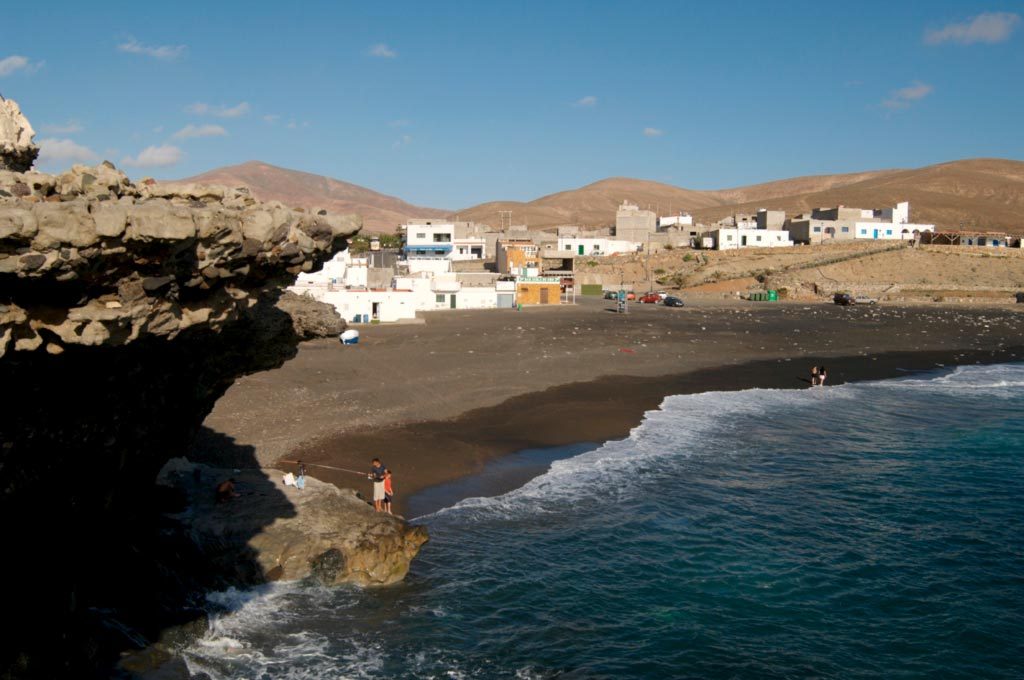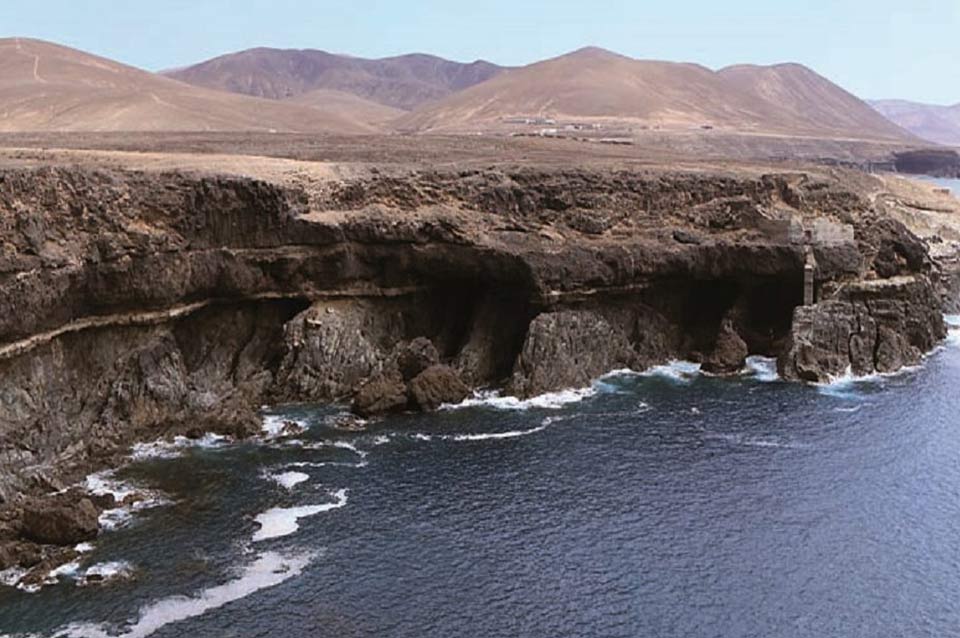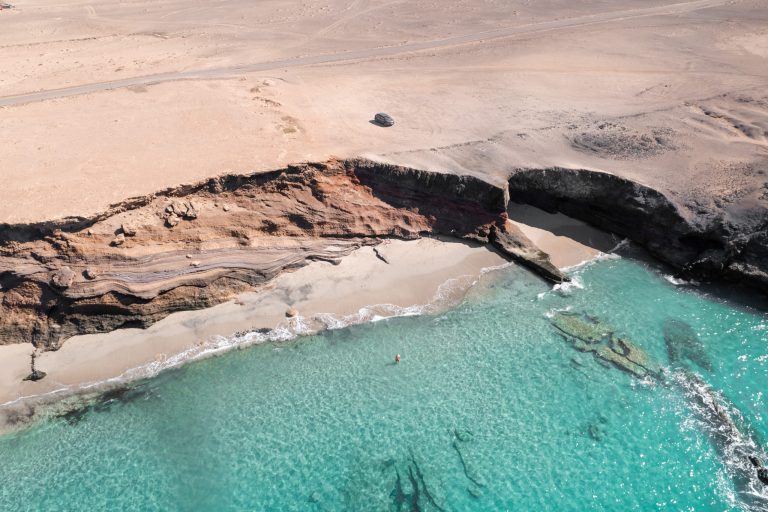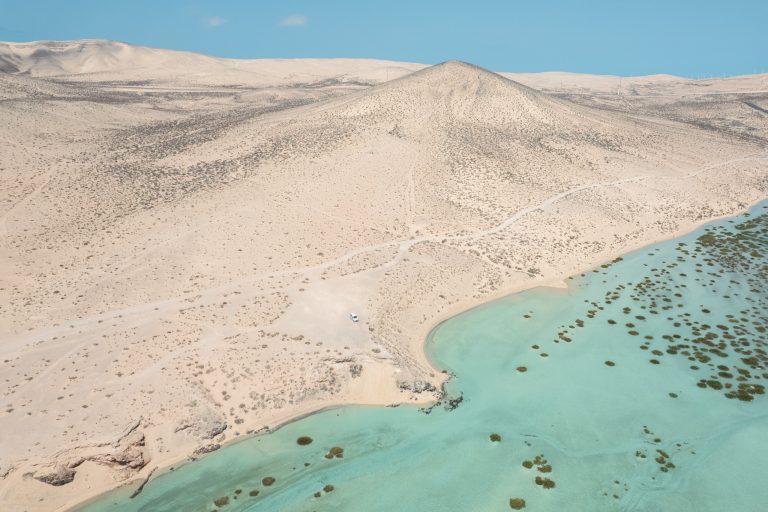Discover the heart of Pájara
On this route we are offered the opportunity to get to know the interior of the municipality. The arid plains dotted with rounded mountains tell us about the old age of the island and the erosive activity, relentless sculptor of landscapes.
It is the ideal route to meet the majorero, the islander of Fuerteventura with an affable and calm character, representative of a unique idiosyncrasy, adapted to the environment in which he lives.
The route leads to the town of Pájara, capital of the municipality. Both here and in the coastal town of Ajuy you can enjoy delicious typical dishes, mainly fresh fish.
Small beaches of both blonde and black sand are scattered throughout the coastline, which, being oriented to the north, presents a rough sea, with persistent waves.
La Pared
The urbanization of La Pared is located on the western coast of Pájara. It is a quiet nucleus born a few years ago that does not reach three hundred inhabitants.
Among its sports offers, it is worth mentioning the practice of surfing, horse riding and a small golf course.
Various restaurants offer us in their menu both an exquisite list of typical Canarian dishes and a careful selection of international cuisine.
Wall Beach
It is located near the urbanization of La Pared, on the northwest coast of the municipality.
The sand is black as a result of the continuous erosion to which the volcanic materials in the area are subjected by the relentless waves. This color contrasts visibly with the sand of the neighboring beaches, which is a clear yellow hue.
Viejo Rey Beach
A beach of approximately 300 meters in length is located near the urbanization of La Pared. It is accessed by a staircase that runs through a small cliff between 15 and 20 meters high.
This stone wall significantly cushions the effects of the wind, which is usually frequent in this area.
As it is oriented to the north, the sea currents are somewhat intense, so extreme precautions must be taken when bathing. It is worth visiting for its beauty and tranquility.
Pájara
Pájara is located 196 meters above sea level with a population of just over 1,000 inhabitants. It is the capital of the municipality since it was established in 1812.
Most of its inhabitants are dedicated to the tertiary sector, mainly goat and sheep ranchers, and rainfed crop farmers. In recent years, an important part of the population has found work in the tourist developments that the municipality has on its southern coast.
The urban nucleus has grown around the church, of classic style and worthy of admiration for its delicate beauty. It is consecrated to the invocation of Our Lady of Regla, patron saint of the town. The original chapel was built in 1687, being dependent on Betancuria until it obtained its canonical independence in 1711, becoming a parish.
The atmosphere that is breathed in the town is one of extreme tranquility, as if time slowed down its flow to allow the greatest enjoyment when walking through its streets.
Toto
Toto is a small town in the interior of the island, with white and grouped houses, located in the lower part of the El Herrero hill.
Its approximately three hundred inhabitants are dedicated mostly to livestock and agriculture, cultivating rainfed plantations at the bottom of the ravine.
It is located two kilometers from Pájara and 250 meters above sea level, lacking any type of tourist infrastructure, which is not an obstacle for your visit to introduce us to the flavor and charm of the peasant architecture of a small and traditional village.
Ajuy
Ajuy is the main urban center of the Windward coast.
It is a quiet town where an incipient tourist infrastructure is beginning to develop, mainly featuring small apartment buildings, restaurants and bars.
The economy is eminently based on artisanal fishing carried out on the nearby coasts.
Small boats remain stranded on the shore during the winter season due to strong tides. However, during the rest of the year they bring a large number of fresh fish to land that can be tasted in exquisite dishes a few meters from the sea.
Puerto de la Pena
Puerto de la Peña is a small cove located north of the municipality of Pájara, next to the coastal town of Ajuy.
Due to the protection it offers from the strong sea currents prevailing in the area, it was the place chosen to make the first landing on the island by the conquerors Jean de Bethencourt and Gadifer de la Salle in 1402, leading Norman troops.
Later it had a certain economic importance thanks to a constant trade in lime, manufactured here and then exported to the rest of the islands.
